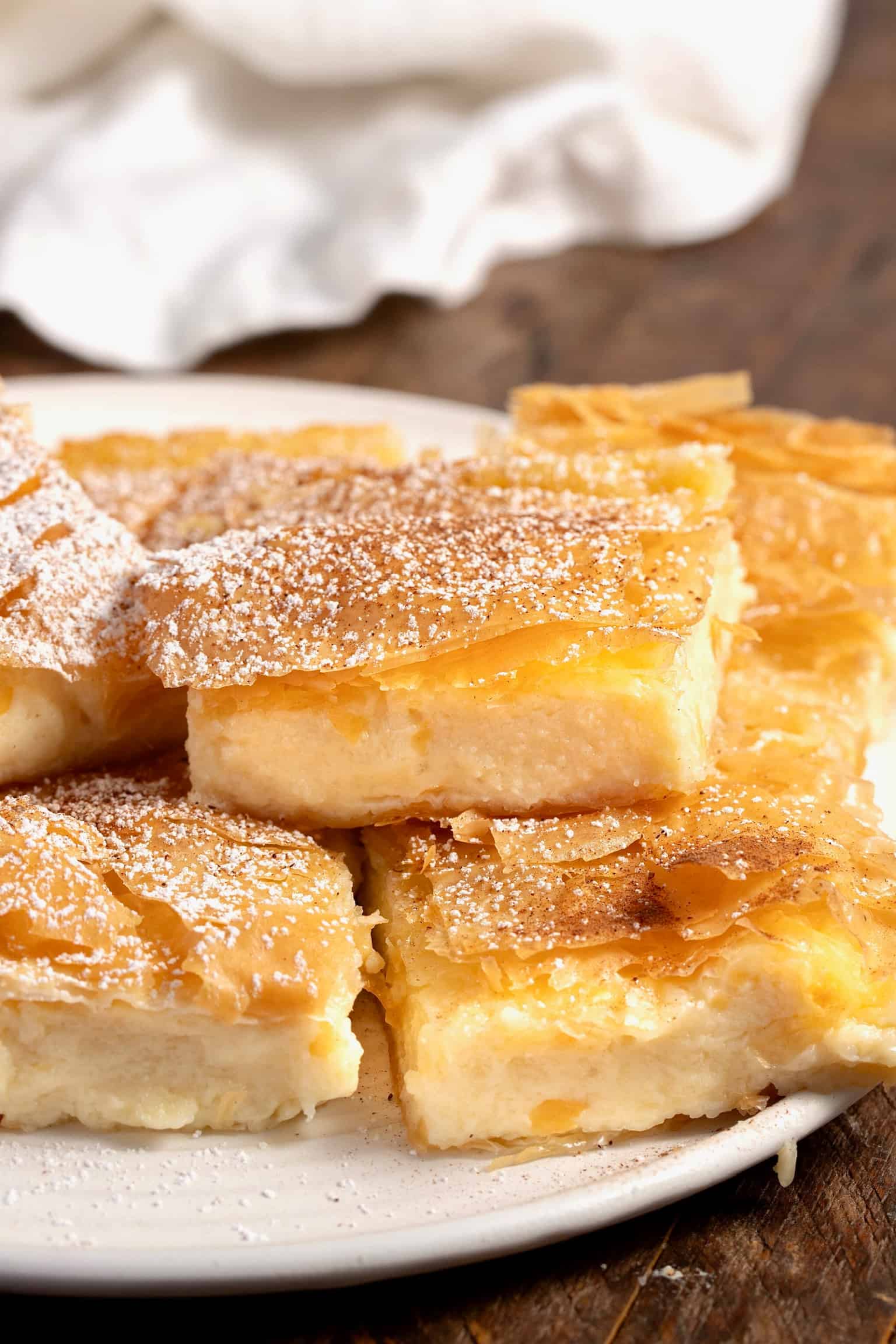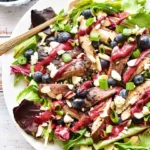Greek cuisine is known for its vibrant flavors and rich traditions, and desserts hold a special place in this culinary world. From sweet pastries to creamy delights, Greek desserts are as diverse as they are delicious. These confections often combine simple ingredients like honey, nuts, and phyllo dough to create an array of mouth-watering treats.
Discovering Greek desserts allows you to explore a unique blend of history and taste that has been cherished for generations. Whether you have a sweet tooth or are simply curious about different cultures, these desserts offer a delightful experience. Prepare to enjoy a journey through the sweet side of Greece with these iconic and beloved treats.
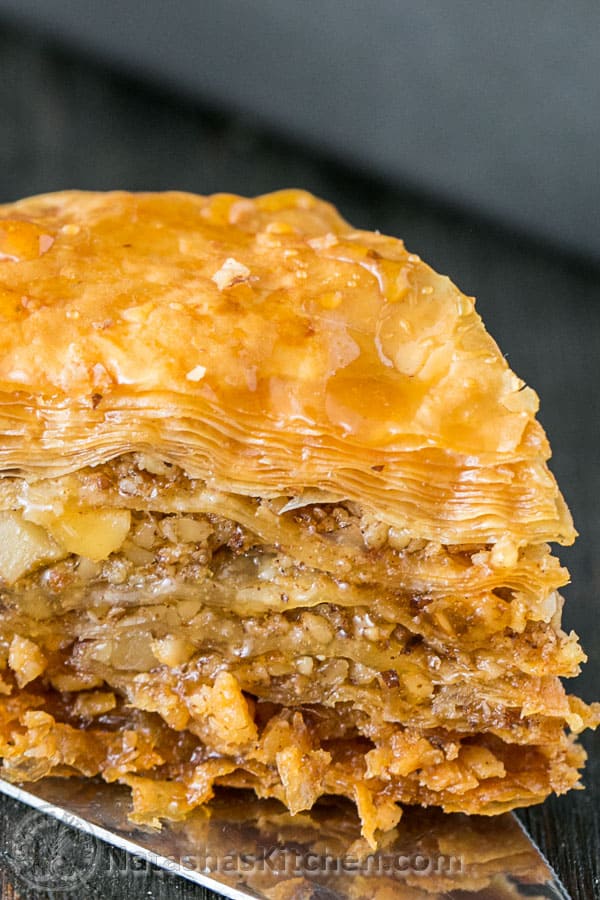
1) Baklava
Baklava is a popular Greek dessert known for its sweet and nutty flavors. It features layers of flaky phyllo dough, filled with a mixture of chopped nuts. Common choices include walnuts, almonds, and pistachios.
To make baklava, you need to first layer the phyllo dough. Brush each layer with melted butter to ensure it bakes to a perfect crisp. After stacking several layers, spread a portion of the nut mixture evenly over the top.
Continue to alternate between layers of phyllo dough and the nut mixture. Make sure each layer of dough is well-buttered. This process helps to create the dessert’s characteristic flakiness.
Once assembled, bake the baklava until golden brown. While it’s baking, prepare a sweet syrup made of honey, sugar, and water. Some recipes also add a bit of lemon juice or cinnamon to the syrup.
When the baklava finishes baking, pour the syrup over it. The phyllo soaks up the syrup, giving the dessert its sweet taste and sticky texture. Let it cool before cutting into diamond-shaped pieces. Enjoy your delicious homemade baklava.
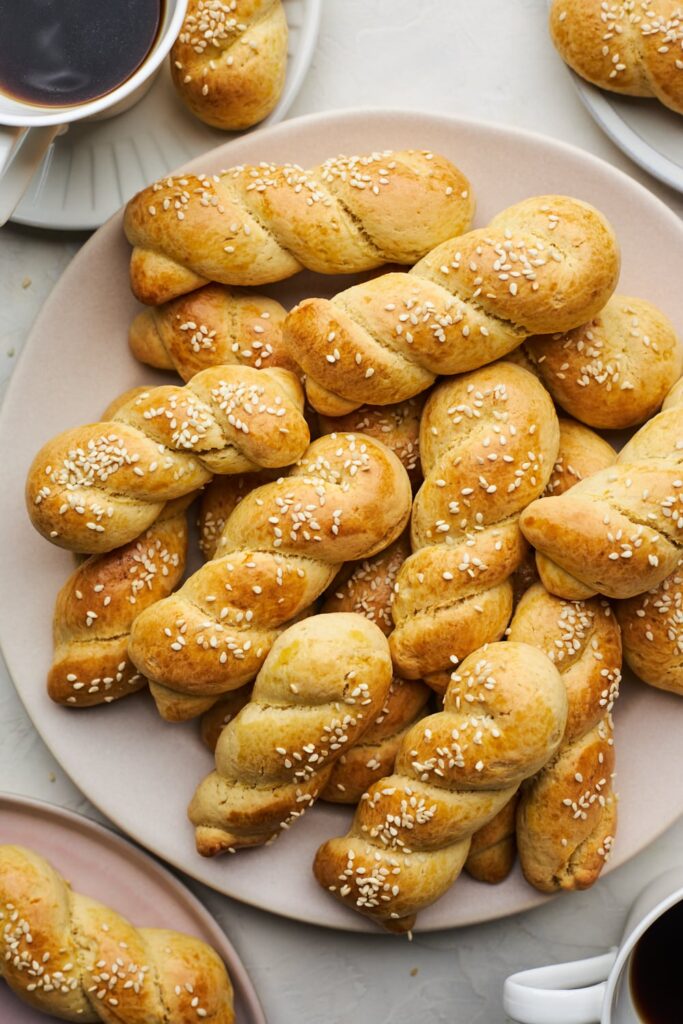
2) Koulourakia
Koulourakia are traditional Greek butter cookies often enjoyed during Easter. These cookies are usually made with simple ingredients like butter, sugar, eggs, and flour.
Start by mixing butter and sugar until they become creamy and fluffy. Butter should be at room temperature for the best results. Add eggs to the mixture next.
Flour, baking soda, or baking powder are then gradually incorporated to form the dough. If the dough is too sticky, you might need to add a little more flour. Let the dough rest for 15-20 minutes.
Shape the dough into twisted or braided designs. This step can be fun and allows you to get creative. Brush the shaped dough with a beaten egg before baking.
Bake the cookies in a preheated oven, usually at 350°F to 392°F, until they turn golden brown. They typically take 15-25 minutes to bake.
Once baked, let the koulourakia cool on a rack. Store them in covered containers to keep them fresh. These cookies have a delightful buttery taste and a slightly crunchy texture.
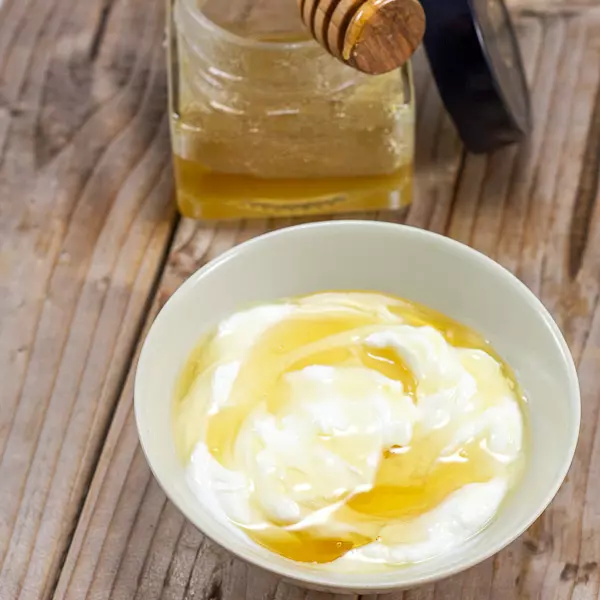
3) Greek Yogurt with Honey
Greek yogurt with honey is a simple yet delicious dessert. This classic dish has only a few ingredients but delivers rich flavor and creamy texture.
To make it, start with plain Greek yogurt. This type of yogurt is thicker and creamier than regular yogurt. Greek yogurt is also high in protein and probiotics, which are good for digestion.
Next, drizzle honey over the yogurt. The honey adds a natural sweetness that complements the tangy yogurt. Choose a high-quality honey to elevate the flavor of the dish.
Adding nuts, like walnuts or almonds, provides a nice crunch. You can toast the nuts lightly to bring out their flavor. Simply sprinkle them on top of the yogurt and honey.
Some variations include adding fruits such as figs. You can bake the figs slightly to enhance their sweetness and softness. Mint leaves can also add a refreshing taste.
This dessert is versatile. You can enjoy it for breakfast, a snack, or a light dinner. It’s easy to prepare and offers a delightful mix of textures and flavors.
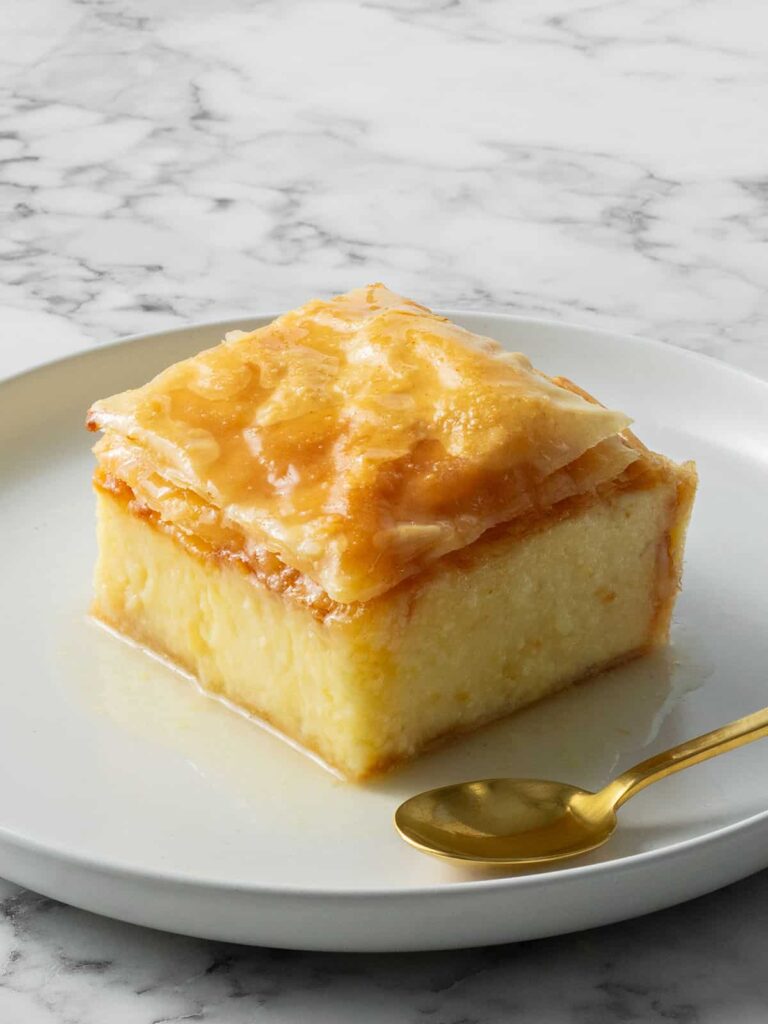
4) Galaktoboureko
Galaktoboureko is a traditional Greek dessert made with layers of crispy phyllo dough and a creamy custard filling. The custard is usually made from simple ingredients like milk, sugar, eggs, semolina, and a touch of lemon zest.
Phyllo dough is brushed with melted butter and layered to create a flaky, golden crust. After baking, a sweet syrup made of sugar, water, honey, and lemon is poured over the hot pastry. This syrup is what gives Galaktoboureko its characteristic sweetness and moist texture.
The dessert is often served cut into squares or diamond shapes. It’s best enjoyed fresh out of the oven when the phyllo is still crispy and the custard is warm.
Galaktoboureko is popular for special occasions and celebrations, showcasing the classic flavors and textures of Greek cuisine.
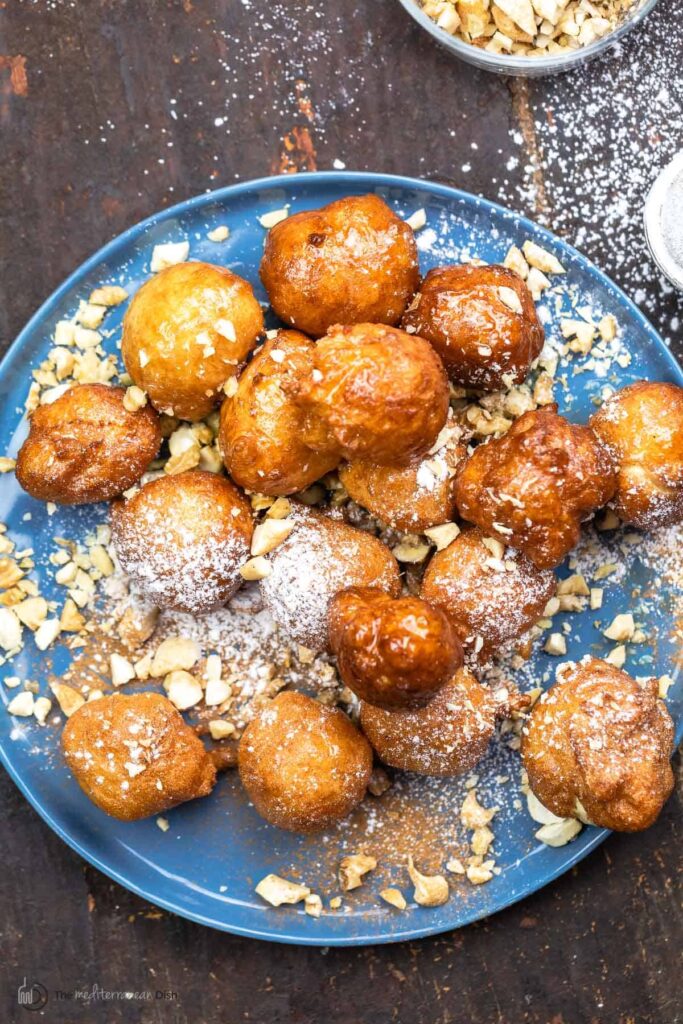
5) Loukoumades
Loukoumades, often called Greek donuts, are small, deep-fried pastries soaked in honey syrup. These delicious treats are crispy on the outside and soft on the inside, making them an irresistible dessert.
To make Loukoumades, you first mix water, yeast, and sugar until it becomes frothy. Then, combine this mixture with flour, cornstarch, and milk, and knead until the dough is smooth.
Allow the dough to rise in a warm place until it doubles in size. After the dough has risen, heat vegetable oil in a frying pan. Drop spoonfuls of the dough into the hot oil and fry until golden brown.
Once fried, Loukoumades are traditionally coated with honey and sprinkled with cinnamon and chopped walnuts. This gives them a sweet and nutty flavor that is enjoyed by many.
Loukoumades are often served during celebrations and are a popular street food in Greece. Enjoy them fresh and warm for the best experience.
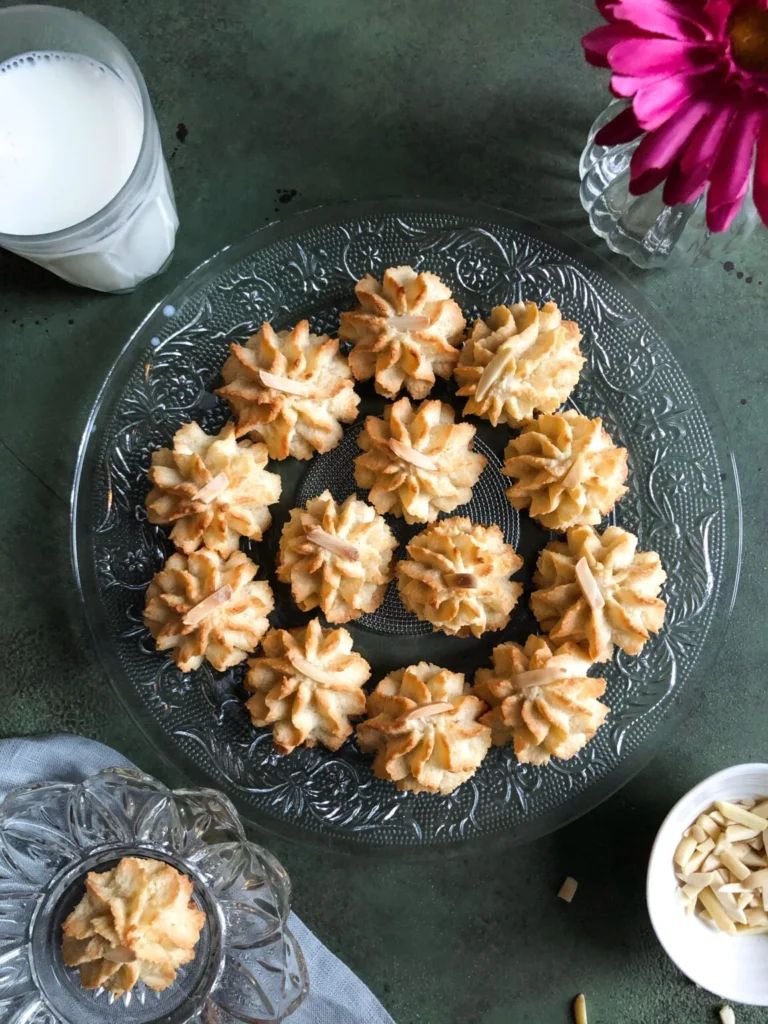
6) Amygdalota
Amygdalota are traditional Greek almond cookies. They’re often enjoyed with coffee or tea.
To make Amygdalota, you start by preheating your oven to 325°F. You need almond flour, sugar, egg whites, and a pinch of salt. Some recipes also include almond extract and orange blossom water for extra flavor.
Whisk the egg whites until they form stiff peaks. In another bowl, mix the almond flour, sugar, and salt. Carefully fold the egg whites into the almond mixture until you get a dough-like consistency.
Line your baking sheet with parchment paper. Form the dough into small round cookies and place them on the sheet. Bake them in the oven for about 15-20 minutes, or until they are lightly golden.
Amygdalota are chewy on the inside and slightly crisp on the outside. They are perfect for any occasion and are especially popular during holidays in Greece.
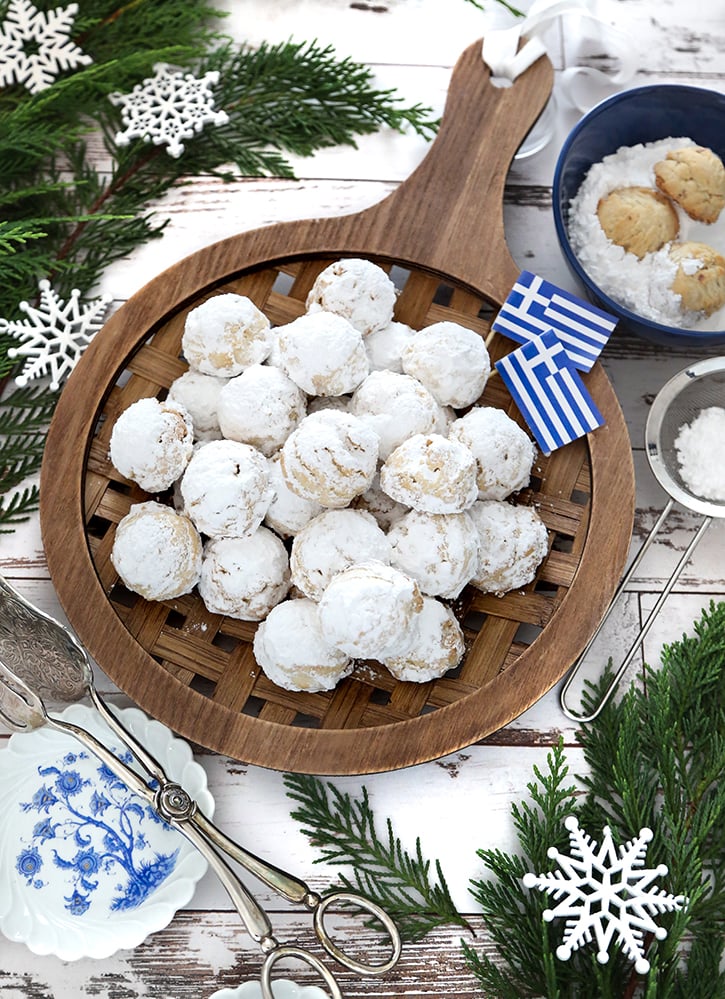
7) Kourabiedes
Kourabiedes are traditional Greek butter cookies. They are popular during festive occasions, especially Christmas.
These cookies are made with a mixture of butter and almonds. To achieve the right texture, you need to beat the butter for a long time, sometimes up to 20 minutes. This makes the cookies light and fluffy.
After preparing the dough, you can shape the cookies. Traditionally, they are either crescent-shaped or round. You can use a mini ice cream scooper to get equal-sized portions.
Once shaped, the cookies are baked until golden. Be careful not to overbake them to keep them from drying out.
After baking, Kourabiedes are dusted with powdered sugar. This sweet coating adds to their festive charm and taste.
These cookies are not just a treat but also a way to share joy and hospitality with others.
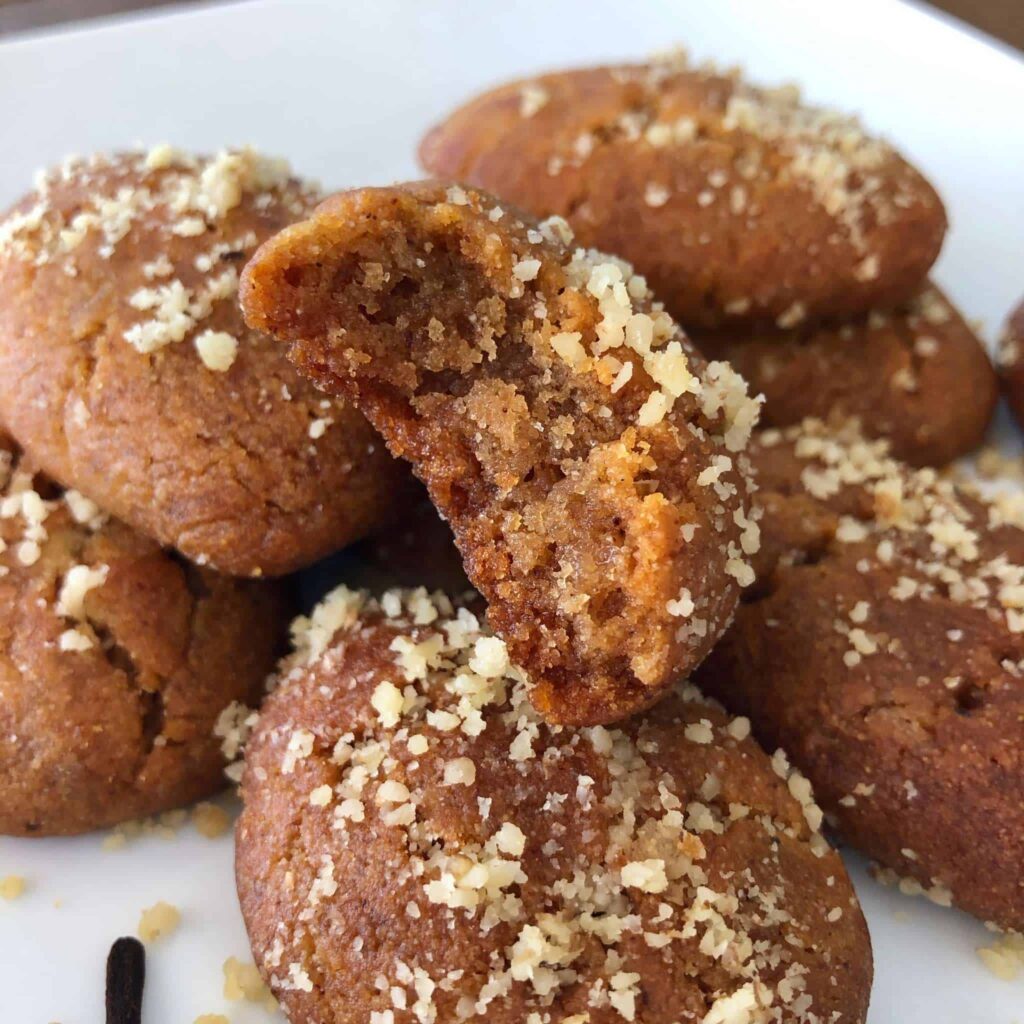
8) Melomakarona
Melomakarona are traditional Greek honey cookies, often made during Christmas. They are full of rich flavors, combining the taste of orange, cinnamon, and honey. Their texture is tender yet slightly crunchy, making them a delightful treat.
To make Melomakarona, you start by preparing the dough. Mix together flour, semolina, and baking powder in one bowl. In another, combine orange juice, cognac, sugar, and spices like cinnamon and cloves.
After forming the dough into oval shapes, bake them at around 350°F. While they bake, prepare a honey syrup with water, sugar, orange zest, and cinnamon. Boil until the sugar dissolves, then stir in honey and let it cool completely.
Once the cookies are baked, immediately dip them in the cooled syrup. Let them soak up the syrup for several minutes. This step gives Melomakarona their distinct honey flavor.
Finish by sprinkling the cookies with ground walnuts and more cinnamon. The result is a batch of aromatic, delicious cookies that are perfect for sharing during the holidays.
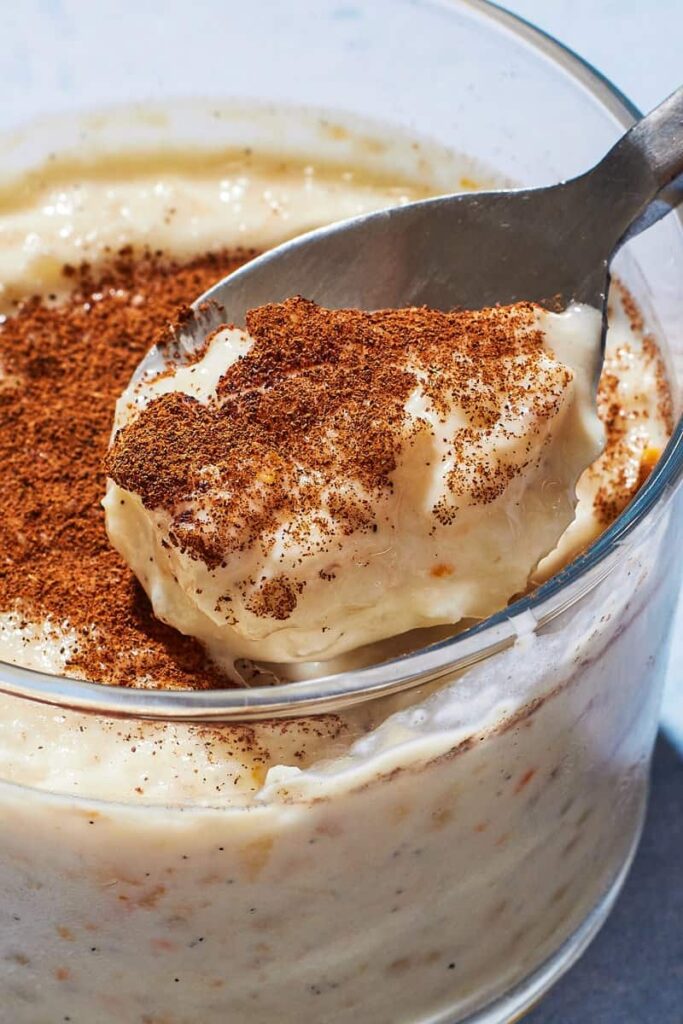
9) Rizogalo
Rizogalo, or Greek rice pudding, is a creamy and comforting dessert. It is made by simmering rice, milk, and sugar together until thick and soft. The result is a dessert that is both sweet and satisfying.
To start, you will need rice, milk, sugar, and a few flavorings. Common additions are cinnamon, vanilla, and citrus zest. These ingredients give Rizogalo its distinctive taste and aroma.
You begin by boiling the rice in water until it is soft. Then, you add milk and sugar and continue to cook until the mixture thickens. Cooking time can vary, but it usually takes about 30-40 minutes.
Stir the mixture often to prevent the rice from sticking to the pot. As it cooks, the starch from the rice helps to thicken the pudding. You should aim for a creamy consistency, not too runny or too thick.
Flavorings can be added during the cooking process. For example, cinnamon sticks and citrus zest can be added to the milk and rice mixture. Vanilla extract is usually added near the end of the cooking time.
Once cooked, let the Rizogalo cool before serving. You can serve it warm or cold, often with a sprinkle of ground cinnamon on top. It’s a simple dessert, but its rich flavor makes it special.
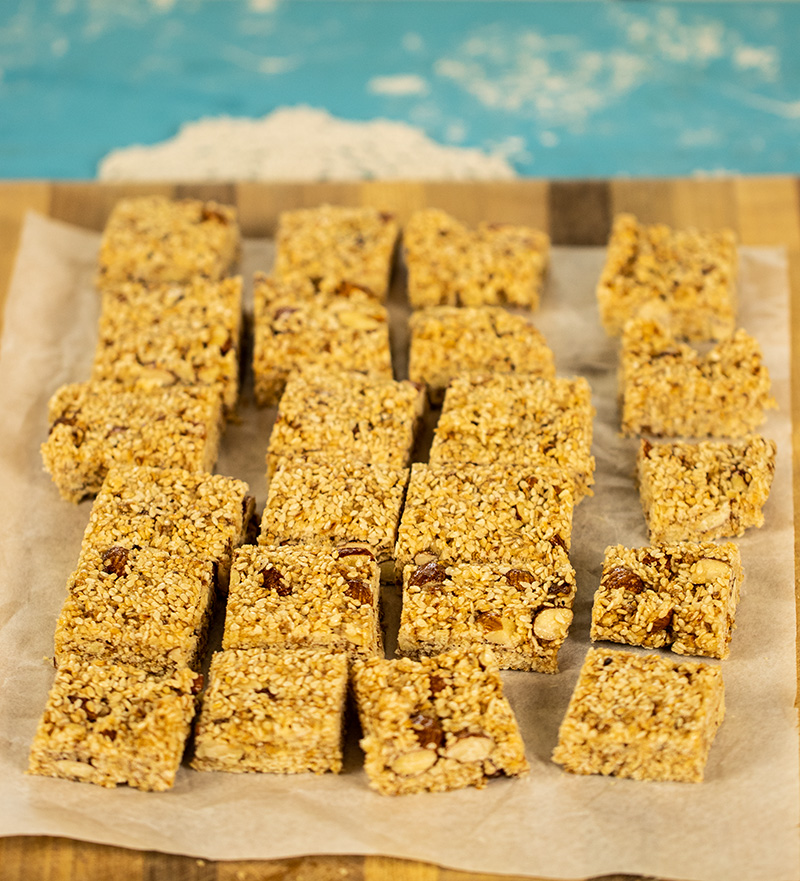
10) Pasteli
Pasteli is a traditional Greek dessert that dates back to ancient times. It is known as one of the earliest forms of energy bars. This sweet treat is made primarily from sesame seeds and honey.
To start, you toast sesame seeds until they are golden. Then, blend these seeds with honey in a saucepan over medium heat. Stir frequently to prevent burning.
Sometimes, lemon juice or spices like cinnamon and cardamom are added for extra flavor. Once the mixture is well-blended, it is transferred onto parchment paper.
You press and flatten the mixture using another sheet of parchment paper and a rolling pin. Allow it to cool slightly before cutting it into bars or pieces of your desired size.
Pasteli is enjoyed as a sweet snack or dessert. It is simple, nutritious, and delicious. You can even add variations by incorporating nuts or sunflower seeds.
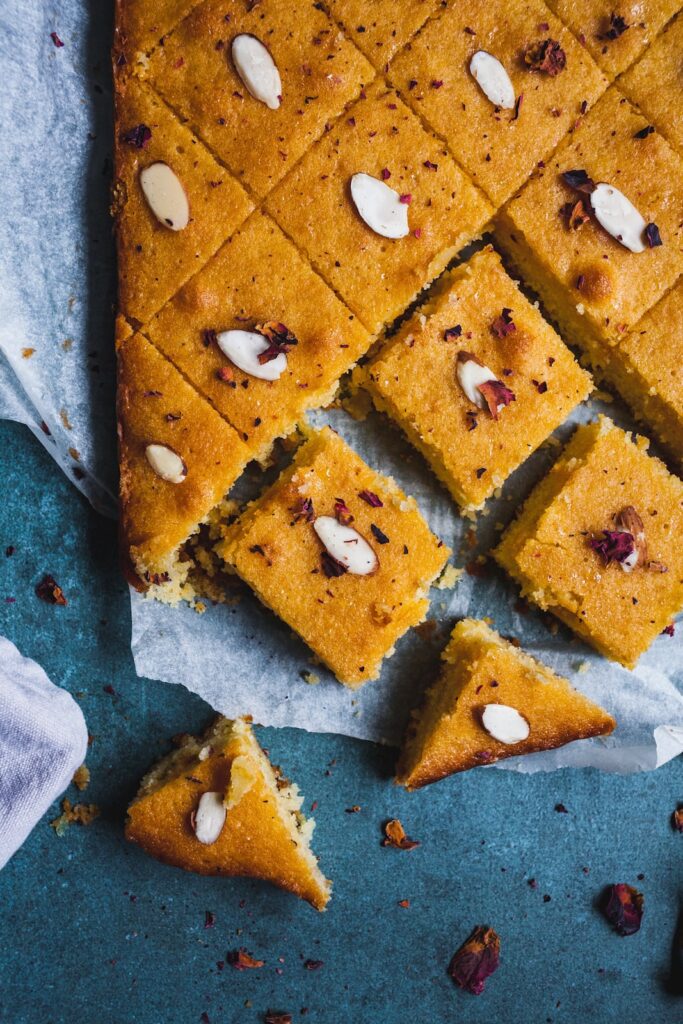
11) Revani
Revani, also known as Greek semolina cake, is a popular dessert soaked in sweet syrup. You will find it in many Greek households and celebrations.
The base of Revani is made with semolina, which gives it a unique texture. You mix the semolina with flour, baking powder, and sometimes coconut or orange zest.
For an added flavor, you might include lemon zest. This gives the cake a refreshing hint that balances the sweetness of the syrup.
After baking, the cake is drenched in a simple syrup made from sugar and water. This allows the cake to absorb the syrup, making it moist and sweet.
Revani is often cut into small servings, usually in diamond shapes. It’s best enjoyed with a sprinkle of ground nuts or a dash of cinnamon on top.
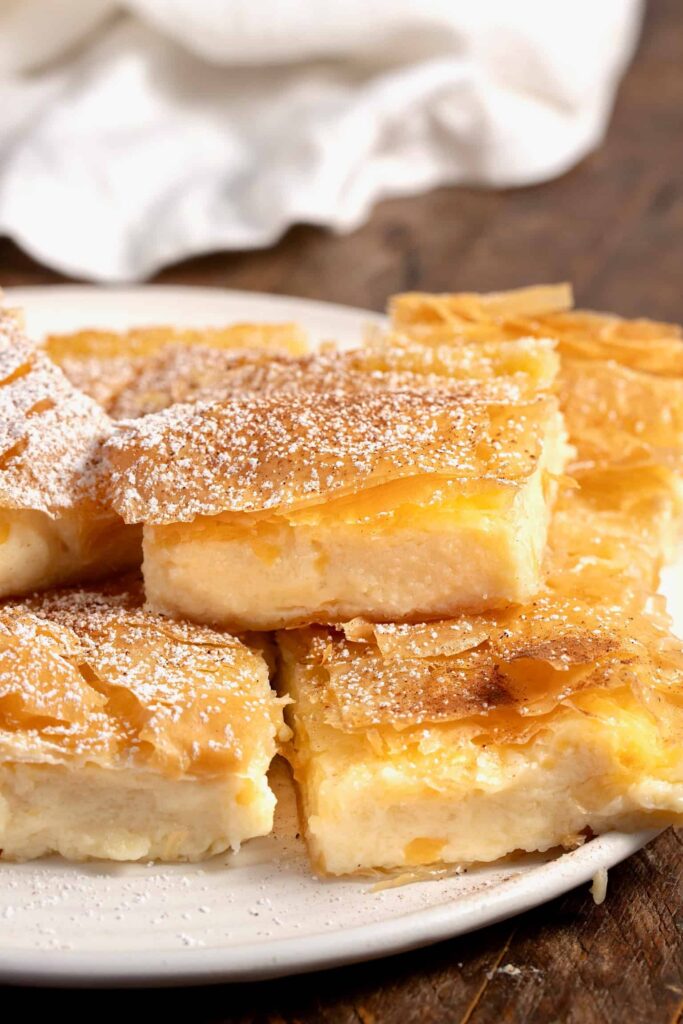
12) Bougatsa
Bougatsa is a delicious Greek dessert that features flaky phyllo pastry filled with a creamy custard. To make this treat, you’ll start by preheating your oven to around 200°C (392°F).
First, prepare the phyllo dough by laying out the sheets and brushing each one with melted butter. This process ensures the pastry turns golden brown and crispy.
For the filling, combine ingredients like sugar, milk, semolina, and vanilla. Cook over medium heat until it thickens into a smooth custard. Spread this mixture evenly over the phyllo sheets in your baking dish.
Once filled, cover the custard with more sheets of buttered phyllo. Use a sharp knife to score the top layers into squares. This makes it easier to cut and serve later.
Bake the bougatsa for 30-40 minutes or until the top is golden brown. Allow it to cool for a few minutes before dusting with icing sugar and cinnamon.
Serve warm to enjoy the contrast between the crispy pastry and the creamy filling. Bougatsa is best enjoyed fresh, making it a perfect treat for gatherings or special occasions.
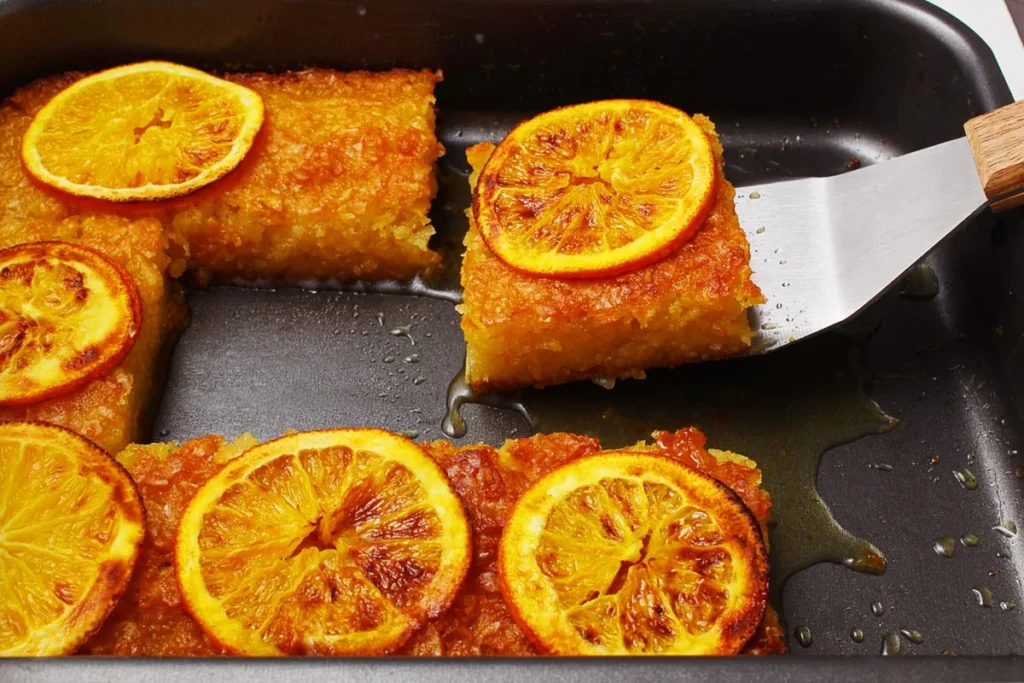
13) Portokalopita
Portokalopita is a delightful Greek dessert. It is also known as Greek Orange Cake. This cake is unique because it uses phyllo dough mixed into the batter, creating a moist and crumbly texture.
To make Portokalopita, you will need ingredients such as eggs, sugar, yogurt, orange zest, and baking powder. The phyllo dough is crumbled and added to the batter, giving the cake its distinct texture.
This cake is usually baked until golden brown. After baking, a sweet syrup made of water, sugar, and orange juice is poured over the cake. The syrup adds a rich, sweet flavor and keeps the cake moist.
Portokalopita is often served chilled or at room temperature. It is a popular treat during festive occasions and is well-loved for its refreshing orange flavor.
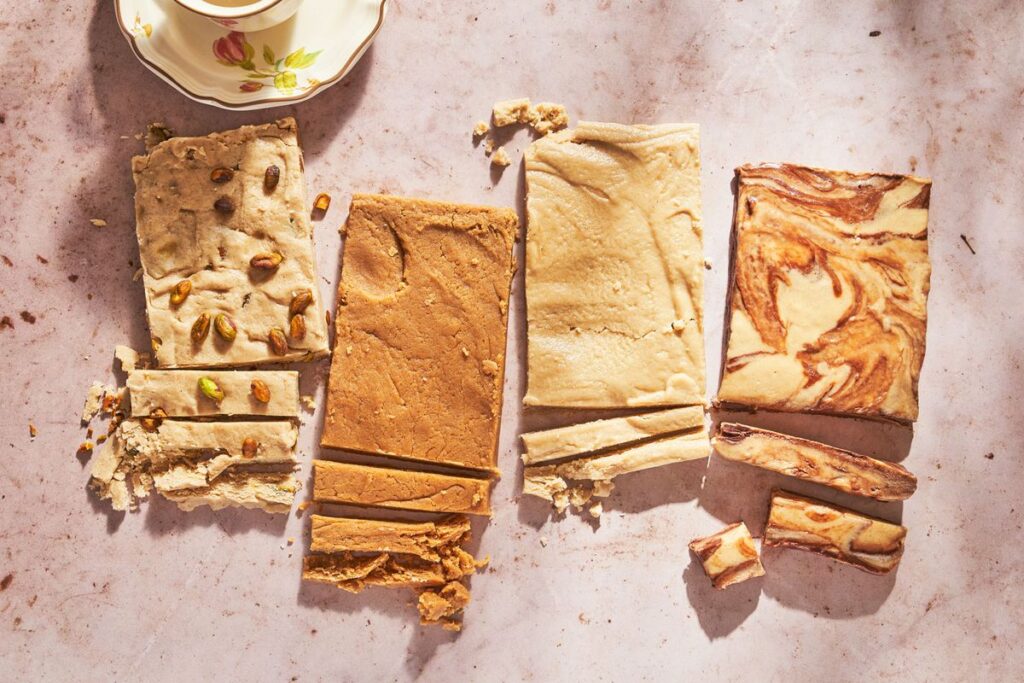
14) Halva
Halva is a popular Greek dessert made from semolina. It’s known for its unique texture and delightful blend of spices.
To make halva, you start by cooking semolina in a mixture of water, sugar, and spices like cinnamon and cardamom. The semolina thickens and absorbs the liquid.
Once the mixture thickens, you add nuts and raisins for extra flavor. The finished mixture is then poured into a mold or ramekins to set. It cools to room temperature before serving.
Halva is often topped with toasted pine nuts or almonds and a sprinkle of cinnamon. The result is a sweet, spiced pudding that is both comforting and satisfying.
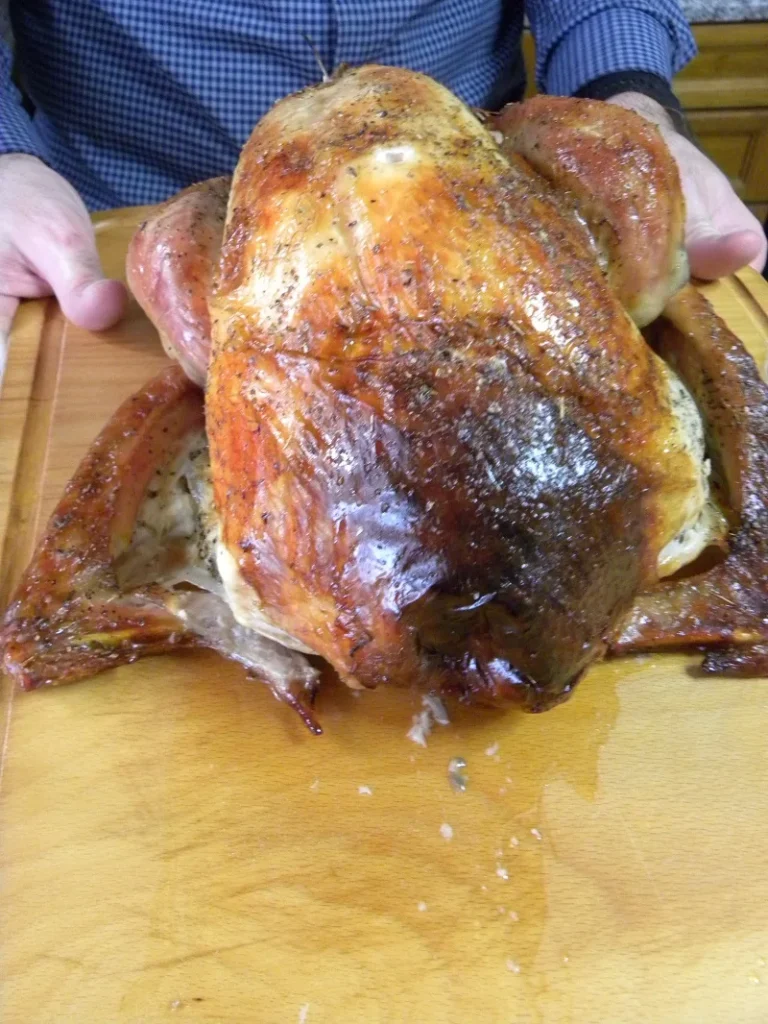
15) Galopoula
Galopoula is a lesser-known yet delightful Greek dessert that delights the taste buds with its unique flavors. This sweet treat is often enjoyed during festive occasions in various regions of Greece.
Galopoula is made from simple ingredients like sugar, eggs, milk, and vanilla. These are combined to create a creamy mixture that is then baked to perfection.
The texture of Galopoula is smooth and creamy on the inside, with a slightly golden top. It melts in your mouth, offering a perfect balance of sweetness and creaminess.
To serve, you can sprinkle a bit of powdered sugar or add a drizzle of honey on top. It is best enjoyed when it’s slightly warm, allowing the flavors to fully come through.
Whether you’re hosting a Greek-themed dinner or just looking for a new dessert to try, Galopoula is a fantastic choice. Its simplicity and rich taste make it a favorite among those who crave authentic Greek sweets.
History Of Greek Desserts
Greek desserts have a rich history influenced by ancient trade, cultural exchanges, and the blending of different culinary traditions. You will find that these desserts often feature ingredients like honey, nuts, and phyllo dough.
Origins And Influences
Ancient Greece played a big role in the early development of Greek desserts. You can see this influence in the use of honey, a common sweetener in ancient times. Honey was often used with nuts to create simple yet delicious confections.
Trade routes brought new ingredients to Greece. Spices like cinnamon and ingredients like phyllo dough came from the East. These additions shaped the flavors and textures of many traditional desserts you enjoy today.
Greek desserts also share similarities with Turkish, Middle Eastern, and Italian sweets. This blending of cultures happened over centuries due to invasions and alliances, leaving a lasting impact on Greek cuisine.
Evolution Through The Ages
Over the centuries, Greek desserts evolved with changing tastes and new ingredients. During the Byzantine period, desserts became more refined and elaborate. Recipes began to include a wider variety of nuts, dried fruits, and spices.
In more recent history, Greek desserts adapted to modern tastes and cooking methods. Desserts like galaktoboureko, a custard-filled pastry wrapped in phyllo, and baklava, layers of phyllo filled with nuts and soaked in honey syrup, became staples.
Holidays and celebrations also influenced the evolution of Greek desserts. Many sweets are associated with specific occasions, such as melomakarona during Christmas and tsoureki during Easter. This tradition continues to keep Greek dessert culture vibrant and diverse.
Common Ingredients In Greek Desserts
Greek desserts are known for their rich flavors and use of natural ingredients. Key components often include nuts, fruits, honey, syrups, and various spices and flavorings.
Nuts And Fruits
Nuts are essential in Greek desserts. Walnuts and pistachios are especially popular. They add a crunchy texture and a nutty flavor. You’ll find them in desserts like baklava and kadaifi, where they pair with sweet syrups.
Fruits, particularly raisins and citrus zest, are also common. Raisins add natural sweetness and chewiness. Citrus zest from lemons and oranges adds a refreshing, tangy taste, often used in cakes and pastries.
Honey And Syrups
Honey is a staple in Greek sweets. Its thick, natural sweetness is often used to coat pastries like loukoumades and melomakarona. It not only sweetens the desserts but also adds a distinct floral taste.
Syrups, usually made from sugar and water with added spices or citrus, are another key ingredient. These thick, sweet liquids are poured over many desserts to enhance their flavor and moisture. They are crucial in treats like baklava and galaktoboureko.
Spices And Flavorings
Greek desserts frequently use spices like cinnamon and cloves. These spices bring warmth and depth to the sweets. Cinnamon is often used in rice pudding and halva, while cloves find their way into cookies and cakes.
Flavorings like vanilla and citrus zest are also popular. Vanilla adds a sweet, aromatic touch, while citrus zest, particularly from oranges and lemons, brings a fresh, zesty note. These are used to uplift the base flavors, making the desserts even more enjoyable.
